What does 'rSt' mean on my Lenze 8200 Inverter?
- Bbarbara99Sep 6, 2025
The 'rSt' error on your Lenze Inverter means that there are more than 8 fault messages in 10 minutes. The solution depends on the specific fault messages.
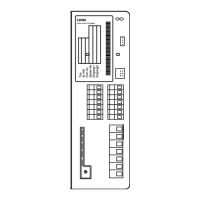
What does 'rSt' mean on my Lenze 8200 Inverter?
The 'rSt' error on your Lenze Inverter means that there are more than 8 fault messages in 10 minutes. The solution depends on the specific fault messages.
Why does my Lenze 8200 Inverter display 'OC1'?
The Lenze Inverter displays 'OC1' due to a short circuit. Find the cause of the short circuit and check the cable. It can also be caused by excessive capacitive charging current of the motor cable. Use a motor cable which is shorter or of lower capacitance.
What does 'EEr' mean on my Lenze 8200 and how to fix it?
The 'EEr' error on your Lenze Inverter means that a digital input assigned to the TRIP-Set function has been activated. Check the external encoder.
What does 'OC4' mean on my Lenze 8200?
The 'OC4' error on your Lenze Inverter indicates an overload during deceleration. Increase the deceleration time. The deceleration time (C013) might also be too short, so check the selection of the brake resistor or connect the brake chopper.
What does 'OOCC2' mean on my Lenze 8200 Inverter?
The 'OOCC2' error on your Lenze Inverter indicates a grounded motor phase. Check the motor and cable. This error can also be caused by excessive capacitive charging current of the motor cable; use a motor cable which is shorter or of lower capacitance.
Why is my Lenze 8200 Inverter motor consuming too much current?
If your Lenze Inverter motor is consuming too much current, the setting of C016 might be too high, or the setting of C015 might be too low. Also, C088 and C091 might not be adapted to the motor data.
Why does my Lenze 8200 Inverter motor not rotate smoothly?
If the motor connected to your Lenze Inverter isn't rotating smoothly, it could be due to a defective motor cable. Also, the maximum current C022 and C023 may be set too low. Finally, the motor might be underexcited or overexcited; check the parameter settings.
What does 'OH' mean on my Lenze 8200 Inverter?
The 'OH' error on your Lenze Inverter indicates overheating. This can happen if the ambient temperature is too high (Tamb > +40 C or +50 C). Allow the controller to cool and ensure proper ventilation. It could also be due to a dirty heat sink (clean it) or an incorrect mounting position (change it).
What to do if my Lenze 8200 Inverter displays 'OC3'?
The 'OC3' error on your Lenze Inverter can be triggered by several issues. It could be due to an overload during acceleration or a short circuit, so increase the acceleration time. The acceleration time (C012) might be too short, so check the drive selection. A defective motor cable can also cause this, so check the wiring. Finally, an interturn fault in the motor itself could be the problem, so check the motor.
What to do if my Lenze Inverter motor does not rotate?
If the motor connected to your Lenze Inverter isn't rotating, several factors could be responsible. The DC-bus voltage might be too low, indicated by a blinking red LED. Check the mains voltage. Other potential causes include the controller being inhibited (blinking green LED), a setpoint of 0, active DC braking, an active quick-stop function, JOGsetpoint activated with JOGfrequency = 0, a fault indication, or a mechanical motor brake that isn't released.
| Category | Inverter |
|---|---|
| Output voltage range | 0 V to input voltage |
| Control modes | vector control |
| Communication interfaces | RS485, CANopen, Profibus, Ethernet |
| Protection features | Overcurrent, overvoltage, undervoltage, short circuit, overtemperature |
| Relative humidity | 95 % (non-condensing) |
| Protection class | IP20 |
Explains the purpose and usage of the operating instructions.
Lists the items included in the delivery.
Details applicable legal and EC directives for the controllers.
Provides essential safety and application notes for controllers.
Explains the structure and meaning of safety icons and signal words.
Lists remaining hazards and precautions for operator safety.
Details vibration resistance, humidity, temperature, and installation height.
Lists electrical and performance data for various types under overload.
Specifies fuse types and cable cross-sections for single drives.
Details controller dimensions based on mechanical installation.
Key considerations for controller installation and environment.
Crucial notes for electrical installation and mains types.
User responsibility for EC directives and EMC compliance.
Checks required before the initial switch-on of the controller.
Step-by-step procedure for initial switch-on and basic operation.
How to select the minimum and maximum field frequencies.
Choosing between V/f control modes with or without boost.
Explains the purpose and methods of controller configuration.
How to read and interpret the parameter code table.
Covers general troubleshooting steps and displays.
Explains how to use the history buffer for fault tracing.
Details fault displays, causes, and remedies.
Procedures for resetting fault indications and TRIP status.
Lists available accessories applicable to all controller types.
Lists software and order numbers for controller management.
Details accessories specific to different controller types.




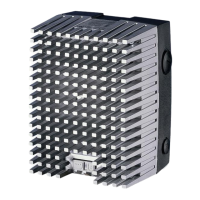
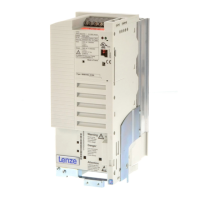
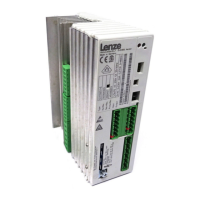
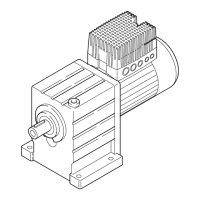




